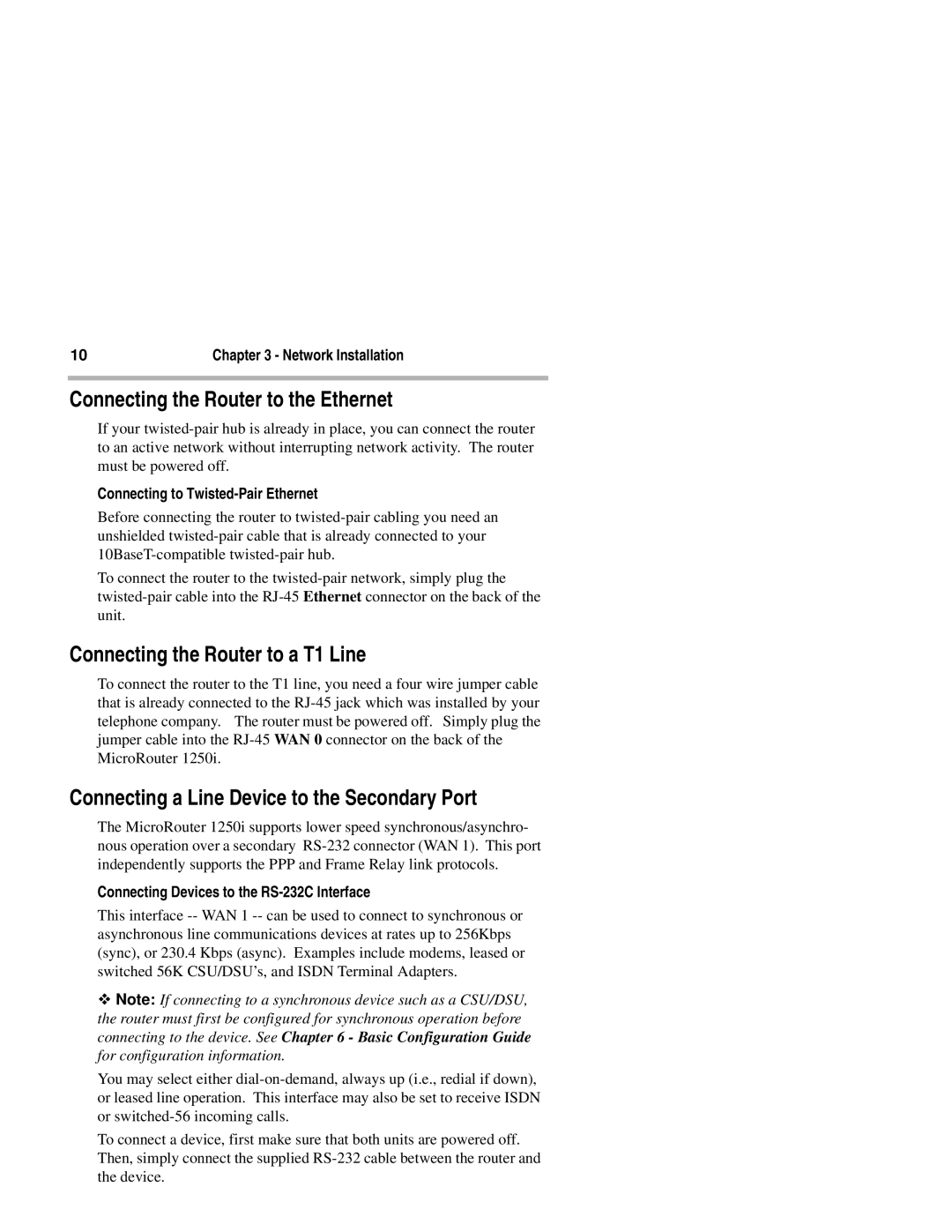1250I specifications
The Compatible Systems 1250I is a cutting-edge, high-performance platform designed for a variety of applications in the computing landscape. It is built to meet the demands of both enterprise environments and individual users looking for robust performance and versatility. One of the standout features of the 1250I is its powerful processing capabilities. The system is equipped with an advanced multi-core processor, ensuring that it can handle multiple tasks simultaneously with ease and efficiency. This makes it particularly suitable for data-intensive applications such as machine learning, data analysis, and complex simulations.In terms of memory, the 1250I supports a significant amount of RAM, allowing for smooth multitasking and improved performance when accessing large datasets. The system's memory architecture is built to optimize speed and responsiveness, ensuring quick access to applications and real-time data processing. Additionally, the Compatible Systems 1250I offers flexible storage options, including high-speed SSD and larger-capacity HDD configurations, providing users with both speed and ample space to store important data.
Connectivity features are also a key aspect of the 1250I. It includes multiple USB ports, Ethernet connectivity, and optional Wi-Fi capabilities, allowing for seamless integration into various network environments. This is critical for organizations that rely on fast and reliable communication between devices, as the 1250I can be easily integrated into existing network infrastructures.
The 1250I is designed with energy efficiency in mind. The system incorporates modern power-saving technologies, reducing overall energy consumption while maintaining high performance levels. This not only lowers operational costs but also contributes to a greener approach to computing.
The software compatibility of the 1250I is extensive, supporting various operating systems and applications. This flexibility allows users to tailor their software environment to suit their specific needs, from enterprise-level software to consumer-grade applications.
Lastly, the Compatible Systems 1250I features a robust security framework, including hardware-level security measures to protect against unauthorized access and data breaches. This is increasingly important in today's digital landscape, where data security is paramount.
In summary, the Compatible Systems 1250I is a versatile and powerful computing platform designed with performance, connectivity, efficiency, and security in mind, making it an exceptional choice for both businesses and individual users alike.
